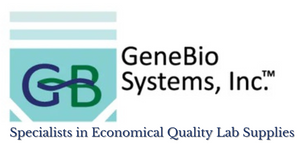
Size: 200ug. Other sizes are also available. Please Inquire.
In Stock: Yes
Lead time: 3-7 working days
Research Topic: Signal Transduction
Uniprot ID: Q03001
Gene Names: DST
Organism: Homo sapiens (Human)
AA Sequence: MHSSSYSYRSSDSVFSNTTSTRTSLDSNENLLLVHCGPTLINSCISFGSESFDGHRLEMLQQIANRVQRDSVICEDKLILAGNALQSDSKRLESGVQFQNEAEIAGYILECENLLRQHVIDVQILIDGKYYQADQLVQRVAKLRDEIMALRNECSSVYSKGRILTTEQTKLMISGITQSLNSGFAQTLHPSLTSG
Expression Region: 1-195aa
Sequence Info: Partial of Isoform 3
Source: E.coli
Tag Info: N-terminal 6xHis-SUMO-tagged
MW: 39.1 kDa
Alternative Name(s): 230KDA bullous pemphigoid antigen 230/240KDA bullous pemphigoid antigen Bullous pemphigoid antigen 1 Short name:BPA Short name:Bullous pemphigoid antigen
Relevance: Cytoskeletal linker protein. Acts as an integrator of intermediate filaments, actin and microtubule cytoskeleton networks. Required for anchoring either intermediate filaments to the actin cytoskeleton in neural and muscle cells or keratin-containing intermediate filaments to hemidesmosomes in epithelial cells. The proteins may self-aggregate to form filaments or a two-dimensional mesh. Isoform 3: plays a structural role in the assembly of hemidesmosomes of epithelial cells; anchors keratin-containing intermediate filaments to the inner plaque of hemidesmosomes. Required for the regulation of keratinocyte polarity and motility; mediates integrin ITGB4 regulation of RAC1 activity. Isoform 6: required for bundling actin filaments around the nucleus.By similarity3 Publications Isoform 7: regulates the organization and stability of the microtubule network of sensory neurons to allow axonal transport.
Reference: "Cloning and characterization of the neural isoforms of human dystonin."Brown A., Dalpe G., Mathieu M., Kothary R.Genomics 29:777-780(1995)
Purity: Greater than 90% as determined by SDS-PAGE.
Storage Buffer: Tris-based buffer,50% glycerol
Storage: The shelf life is related to many factors, storage state, buffer ingredients, storage temperature and the stability of the protein itself. Generally, the shelf life of liquid form is 6 months at -20℃/-80℃. The shelf life of lyophilized form is 12 months at -20℃/-80℃.
Notes: Repeated freezing and thawing is not recommended. Store working aliquots at 4℃ for up to one week.
